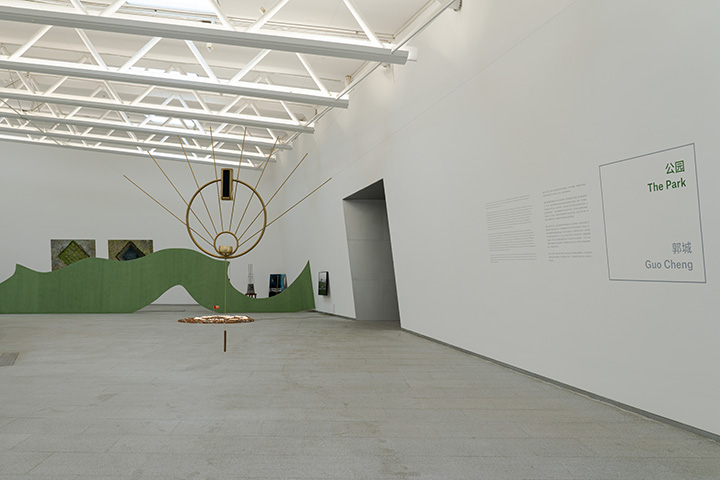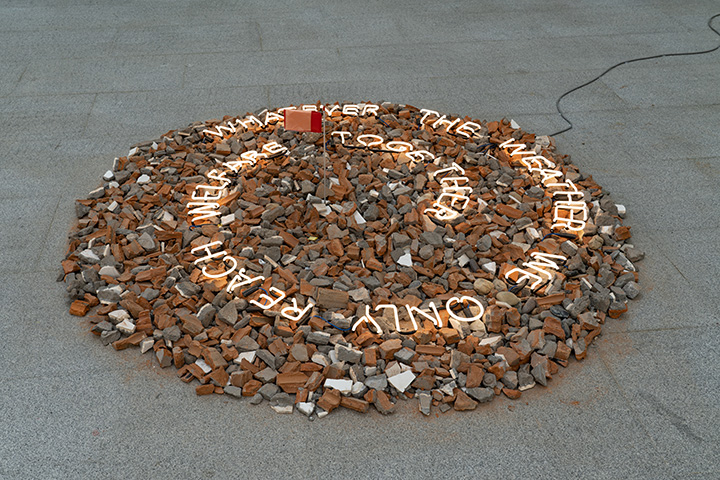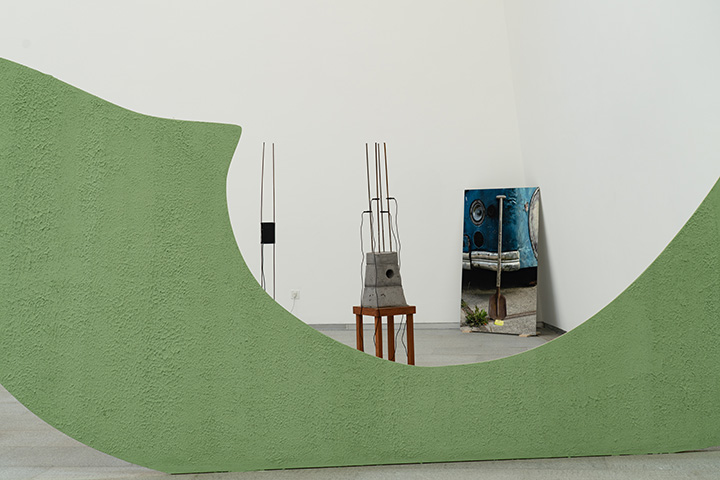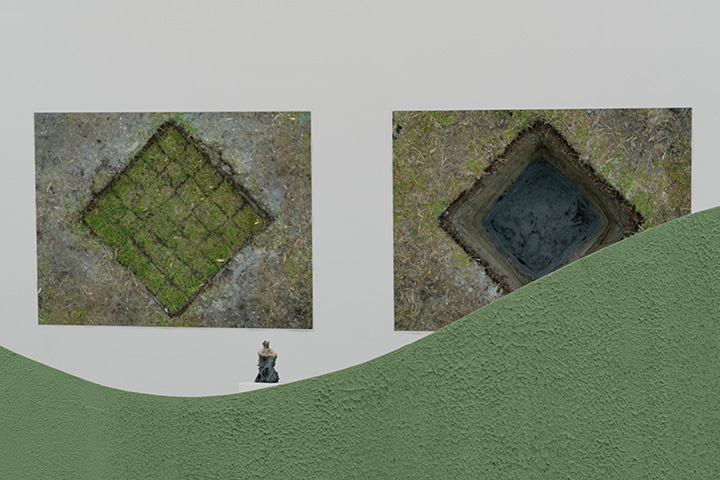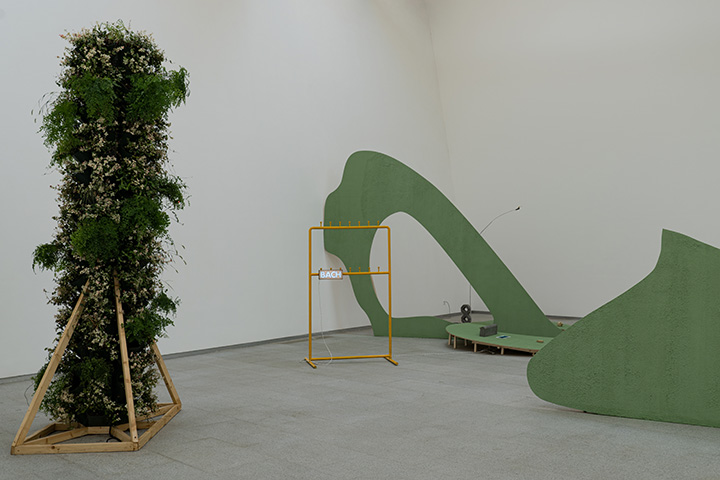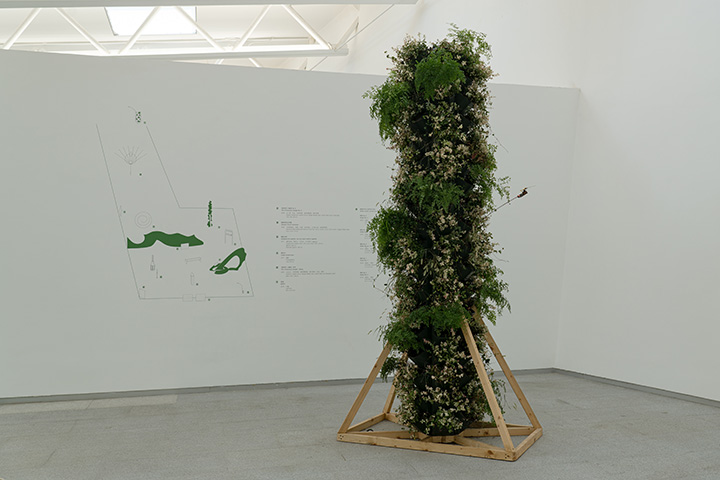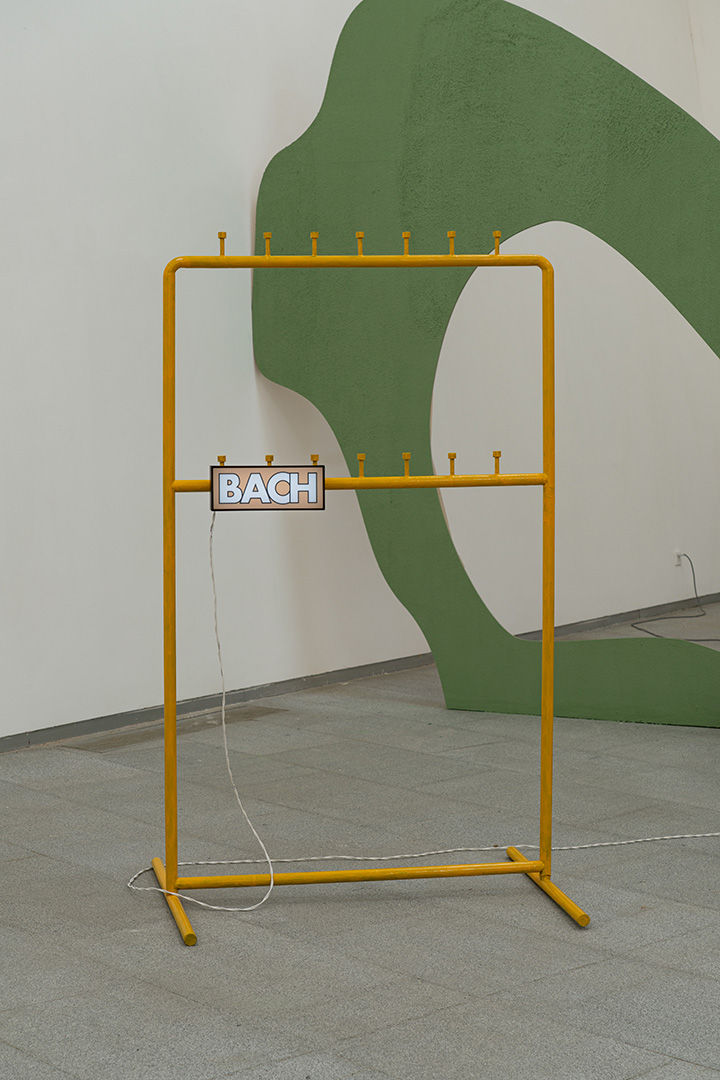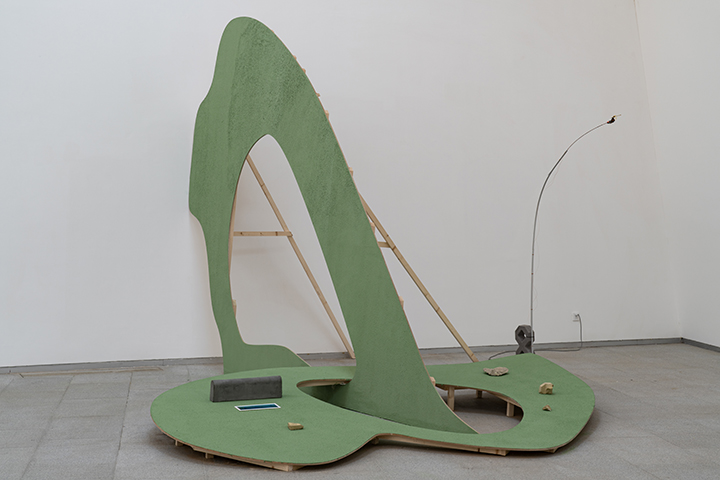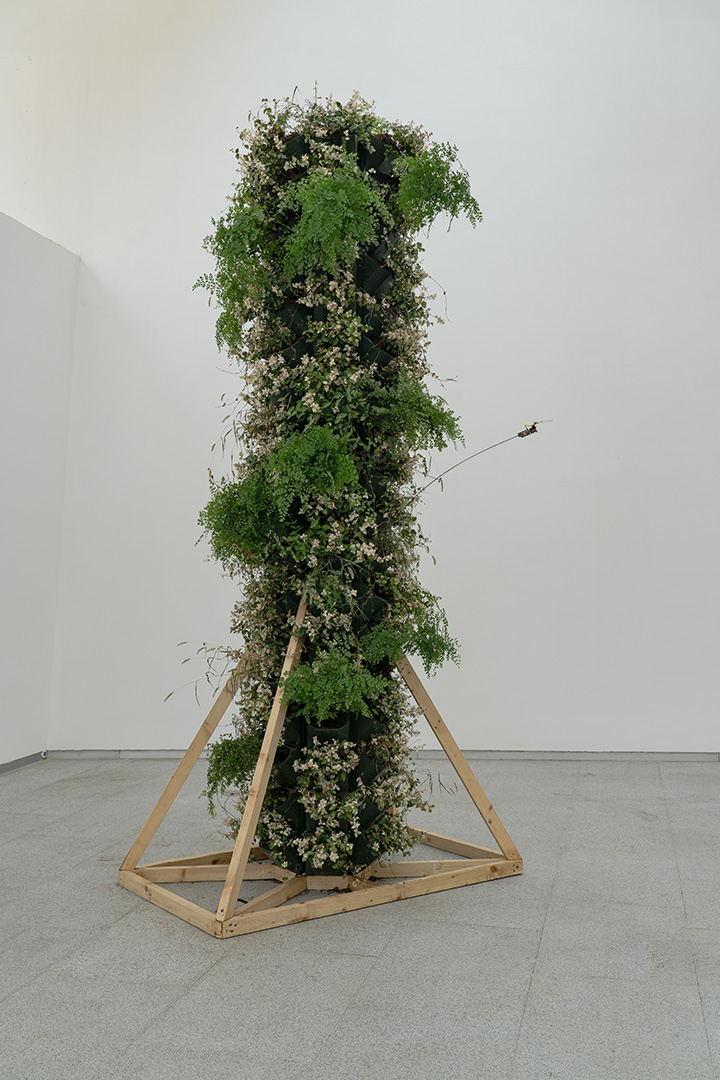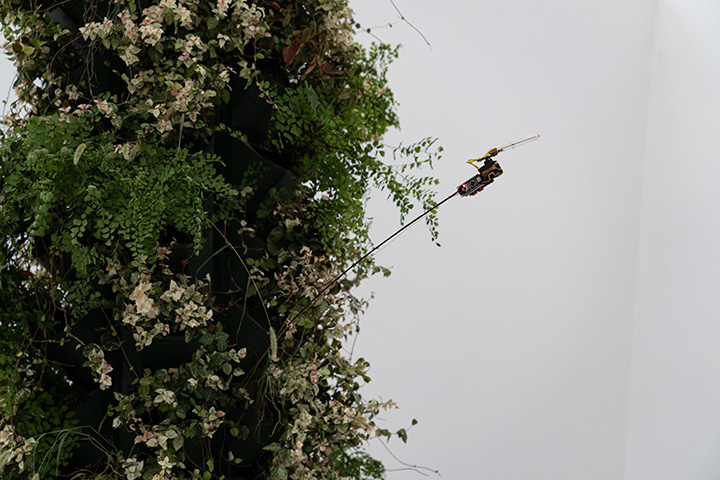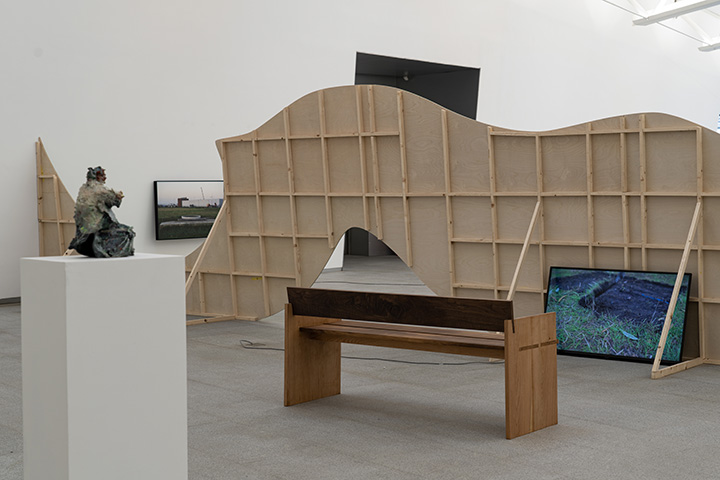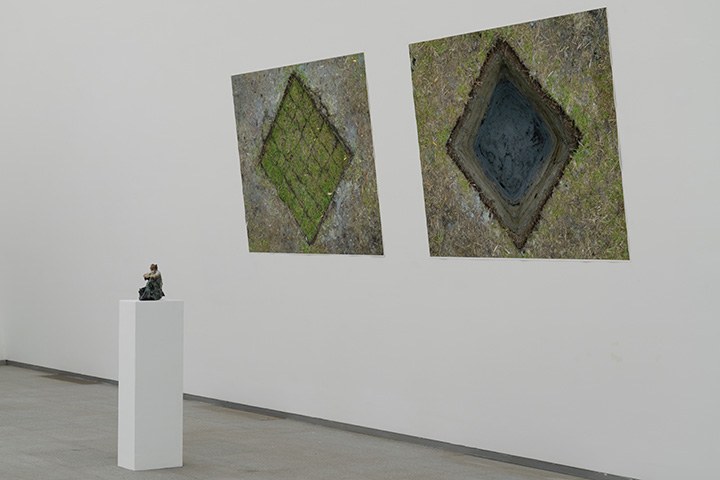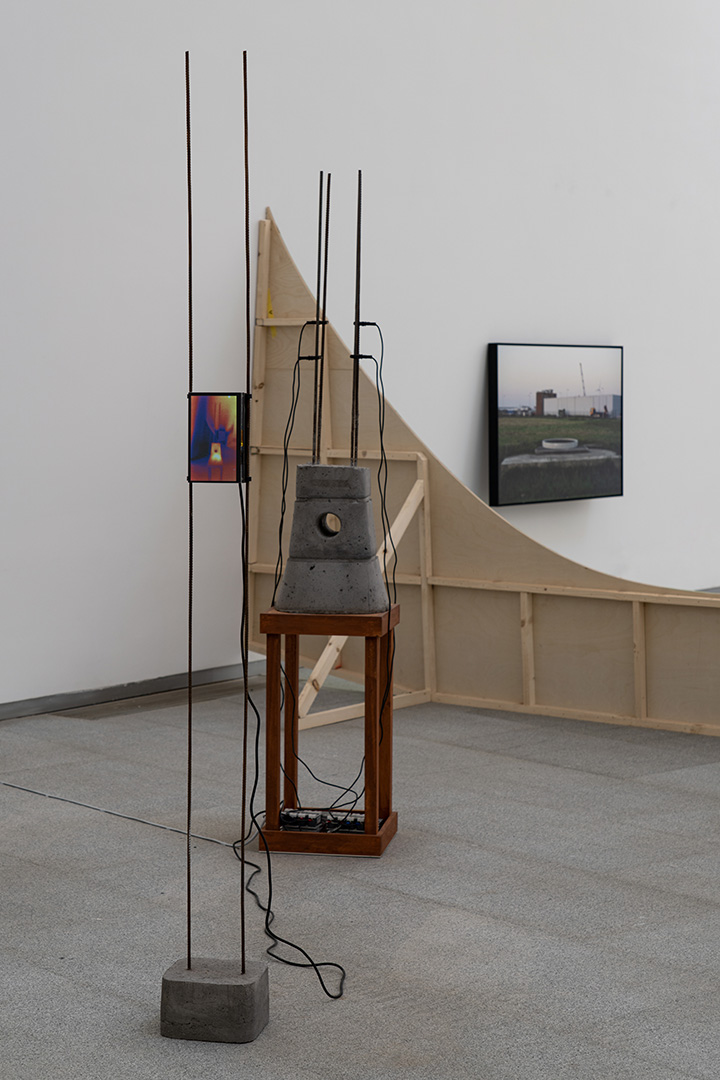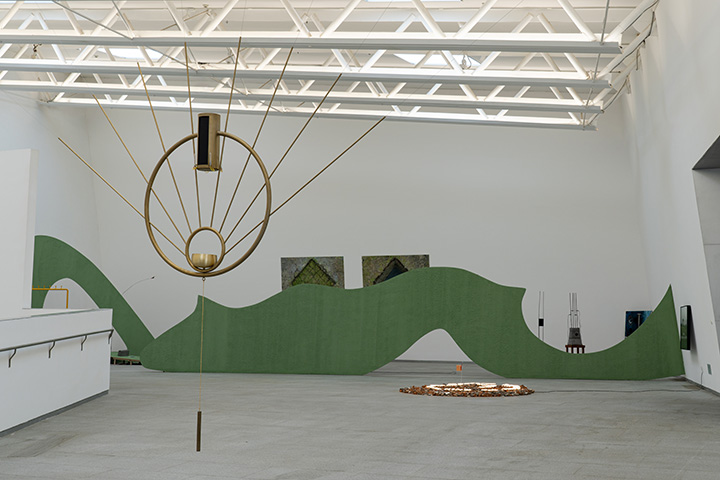
公园
2022
个展,四方当代美术馆
这是一座公园,游客们将在此看见自然的深层结构。空气中的辐射,被挖掘过的地层,它探测自然表层下的人类痕迹,寻找人与自然纠缠的物证。或者,我们也能称它为一座自然的解析装置。
长期以来郭城思考着技术对人及环境的影响,特别是那些效应远超人类生理极限的技术。在今天,地质学家根据这些技术的残留物将地质年代更新为人类世,不仅意味人的力量从此并列于海洋、地壳与季风,也暗示着人类亦无法完全控制自身的造物——曾经技术是将自然调控成骨骼或恒温系统那样的内稳态手段,但此刻我们却很难不从目的与效应的偏差里发现代谢的失能。
正是在这样的情境下,这座公园捕捉到的是当前技术的现实:技术是人的外置生存系统,也是独立于人的客体。如果我们希望理解技术在此的真正意义,那就不得不想象一种超越人类范畴的视角,去观察技术的起源与其后遗症的整体。
如此,我们可以说,这座公园是一座并不为人设计的公园。它呈现的是技术物的纯粹在场。无论是等待上世纪核试验留下的辐射在万年后回归自然水平,或将包裹着物件的水泥块视作未来琥珀,这些远大于人类生存周期的物证都向我们指出一种认识论的困境:在宇宙的时间尺度下,该如何看待人类退场后的技术物?此外,由于当代技术正转向一种近乎先验的、代理智能的模式发展,技术的认识论困境也就同样存在于这种非经验主义的起源中:一旦人们无法凭借操作便理解技术的真实潜能(它的原理与后果),技术在人们眼中,就可能成为神秘、荒诞、进退维谷的存在。
这便是公园入口那等待着感应电离辐射以生成真随机数的“神谕”装置,根据AI识别照片而制成的扭曲“雕像”,一座不知正在拆除或者搭建中的风车基座——它们坐落在意义的疆域之外,一片荒芜而自洽的空间。
这是一座公园。如果从空中鸟瞰,游客将发现它的造景来自蝴蝶花纹。但公园本身并不提供此类的观看视角。因为距离终点仅有一个权限或技术之遥的状态,就是当代人类的日常。
文:黄柏然
The Park
2022
Solo Show, Sifang Art Museum
This is a park. Here, visitors will see the inner structure of nature. Radiation emanated into the air, and geological strata that have been mined, it probes human traces beneath the natural surface in search of any physical evidence that records the entanglement between human beings and nature. Perhaps, we can also call it a dissection installation of nature.
Guo Cheng has long contemplated the impact of technology on human beings and the environment, especially the ones whose effects far exceed the physical capacity of human beings. Based on the remnants of those technologies, geologists of our time have declared Anthropocene as an official subdivision of geologic time. In this new era, it not only means that human power can match that of the ocean, the Earth's crust, and the monsoon, but also implies that men cannot have full control over their own creation—technology used to be a means of monitoring nature into homeostasis that is similar to the skeleton or a thermostatic system, but now we cannot evade the metabolic dysfunction which is shown in the offset of effect from its original purpose.
Hence, we shall say that this park is not a park designed for humans. What it shows is an absolute presence of technological products. All the physical evidence that has outlived human existence—the waiting for the radioactive waste emitted from nuclear tests of the last century to decay back to a natural level, or the construing of an object covered by cement as a crystallized amber in the future—points to an epistemological dilemma: how should we approach the technological products on a cosmic timescale after human’s absence? Meanwhile, as the technology of the contemporary age is shifting towards an almost a priori, intelligent-agency mode of development, the aforementioned epistemological dilemma likewise exists in a non-empiricist origin: once human beings are no longer able to measure the actual potential of technology (for its mechanism and aftermath) through their application, then technology seems to become a mysterious, absurd and catch-22 situation to us.
There stands the “oracle” installation at the entrance of the park, consisting of a real random number generator that reacts to ionizing radiation, a twisted “sculpture” that is made of photos processed by artificial intelligence, a windmill base that is hard to tell whether it is being dismantled or built—they are located outside of the field of meaning, in a barren yet self-consistent space.
It is under this context that Guo Cheng’s park captures the reality of technology this day: technology is an external survival system for human beings and at the same time an object independent of people. If we strive to understand the ultimate meaning of technology under this context, then we must imagine a perspective far beyond the scope of humans in order to observe the origin of technology and the totality of its aftereffects.
This is a park. If the visitor takes a bird’s-eye view from above, then they will realize that its landscape takes inspiration from the patterns of a butterfly. But the park itself does not prompt such a viewing perspective. The reason lies in the normalcy of human beings, that we are constantly only one step behind our terminal goal, in need of that one last permission or technology to close the remaining distance.
Text by Huang Pojan
